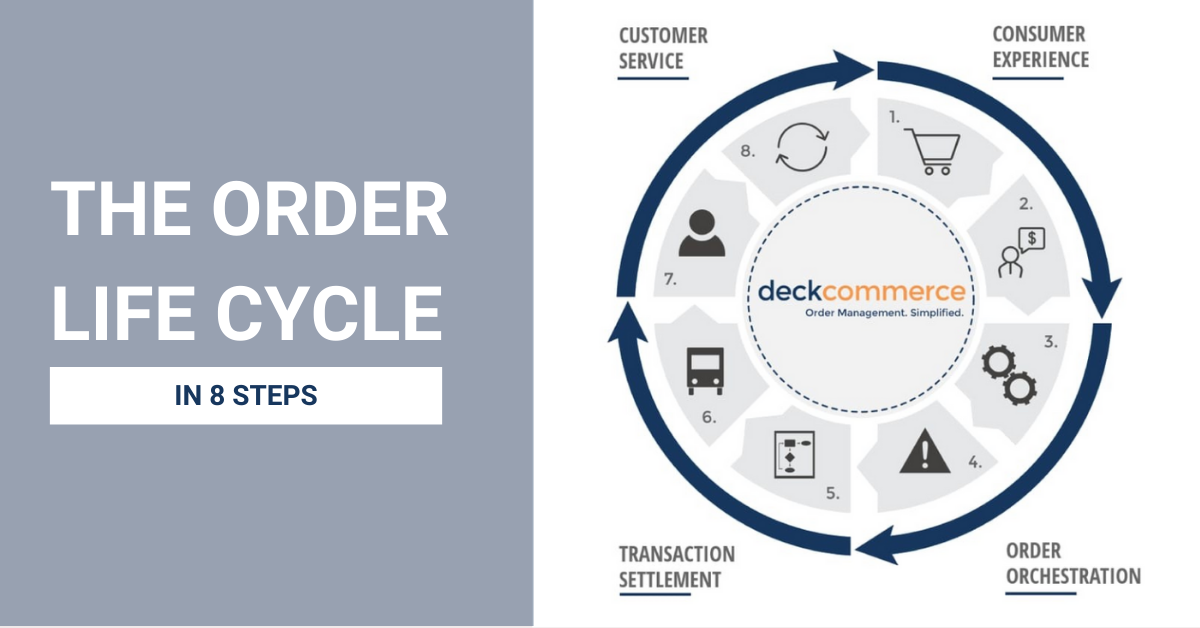
As retailers see an increase in direct-to-consumer (D2C) sales, they're seeing new challenges that come with the business model—including technology to meet ever-changing customer expectations.
To keep up with omnichannel, dropshipping, and other complex D2C distribution models, retailers are feeling the amplified need for advanced order management solutions like distributed order management.
What is Distributed Order Management?
Distributed order management (DOM) powers advanced order processing and routing logic to fulfill retail orders from the best location(s)— maximizing margins and improving customer experience.
They provide global views of inventory and orders and determine the best fulfillment source by referencing comprehensive rules including proximity, priority, capacity, and others. Brands with multiple sales channels and robust fulfillment networks use DOM to automate business rules that optimize their buy, fulfill, return anywhere models.
-png.png?width=772&name=Blog%20Body%20Image%20(2)-png.png)
Distributed OMS vs. Order management
Standard – or “traditional” – order management is focused on automating order processing functions like transactions, customer communications, and servicing. Distributed order management enables traditional order processing plus the addition of advanced order-routing and logic-based rules that determine which fulfillment location can (and should) fulfill the order to the consumer.
Standard order management supports retailers with simple operations (i.e. a single sales channel and 1-2 fulfillment locations), where distributed order management systems support retailers with larger fulfillment networks and more sales channels (i.e. omnichannel, multi-brand, global footprint, and complex fulfillment operations).
Fulfillment scenarios and customer experiences supported with distributed order management
How retailers handle complex fulfillment scenarios can make or break the entire customer experience.
Customers expect to receive their orders without issue no matter what items they order.
Let’s say a customer purchases an in-stock item, both a digital and physical gift card, a custom item, and preorders an item. To the customer, they are placing one order.
If a retailer is unable to fulfill such a complex order because of limited fulfillment rules/scenarios (fill or kill or can’t split shipments), all the customer knows is their order was canceled or delayed. Most likely, that customer will take their business to another retailer that has advanced order management rules to fulfill the order seamlessly regardless of the complexity.
With DOM, complex fulfillment scenarios like the above example can be automatically routed to the optimal fulfillment location(s), trigger customer communications, and payment transactions based on configurable rules set by a brand.
Some of the most common fulfillment scenarios supported include:
- Split shipments or ship complete
- Quickest or closest to the customer (proximity)
- Prioritize location based on profitability (i.e. is fulfilling from a high-velocity warehouse more profitable than any store, even if the store is around the corner from the customer)
- Capacity controls to prevent overwhelmed fulfillment locations
- Designate location based on item type (i.e. large items that may only ship from certain locations, items that require gift wrap, etc.)
- Turn fulfillment nodes on and off as needed (i.e. a store has an event, a warehouse is shut down due to inclement weather)
- Customer fulfillment (i.e. store pickup, curbside pickup)
- Same-day delivery via couriers (i.e. Shipt)
- Dropshipping rules specific to retailer compliance (i.e. fill or kill)
DOM & Omnichannel Fulfillment
DOM enables an omnichannel strategy by managing orders from all channels in one place, so brands have visibility and control to create ideal CX and make strategic business decisions.
By accepting order inputs and producing outputs for an unlimited number of sales, fulfillment, and return channels, DOM makes it easy to add, remove, or change logic as needed to support both changing customer experiences and business processes.
3 Ways DOM Supports an Omnichannel Strategy
1.) Enables flexible buy, fulfill, and return experiences between all sales and distribution channels, so customers can interact with a brand in the way that’s most convenient for them, while the brand maintains high margins. These experiences include:- buy online pick up in store (BOPIS)
- buy online pick up at curbside (BOPAC)
- buy online return in store (BORIS)
- buy online ship from store (SFS)
- buy in store return to warehouse
- buy in store ship from warehouse
- buy in store return to store
- buy online fulfill and return via 3rd party (dropshipping)
- any other variation for a truly buy, fulfill, return anywhere strategy
2.) Makes it easier for retailers to automatically process orders placed across any channels like DTC websites, marketplaces, affiliate sites, search feeds, social selling, and apps.
3.) Provides accurate cross-channel inventory visibility, including dispositions, as orders are processed.
Distributed order management (DOM) & Dropshipping
The comprehensive sourcing logic supports a profitable dropshipping strategy by:
- Reducing training time for warehouse employees
Training warehouse employees to manually run through the long list of requirements needed to meet each retailer’s compliance & requirements (i.e. fill or kill, shipping SLAs, etc.) can be near impossible and time-consuming. An order management system with DOM capabilities can automate requirements for each retailer, ensuring warehouse employees don’t have to manually review each order for compliance. - Minimizing fines & chargebacks for orders that don’t meet retailer requirements
Big-box retailers charge premium fees for orders that don’t meet their strict dropshipping standards. With automated DOM rules, these orders can be detected before fees are incurred – protecting your business from sunk costs associated with dropshipping. - Rerouting orders that don’t meet dropship requirements to another distribution center when possible
Not only can DOM logic identify unable-to-fulfill orders, but brands can route the order to the next best fulfillment location – all without manual intervention. - Communicating inventory position to all channels
As dropshippers reserve and ship inventory, DOM systems update available-to-sell (ATS) inventory across all channels to prevent oversells and frustrated customers.
How does distributed order management work with an ERP?
If a brand is using an Enterprise Resource Planning (ERP) system, it’s likely they need advanced order management if they want to support a direct-to-consumer fulfillment model. While an ERP supports static, backend business processes, DOM enables fulfillment operations that meet the ever-changing demands for the best customer experience.
A few examples of how DOM supports business processes that enable the best customer experience:
- Enabling buy, return, fulfill anywhere experiences most convenient for your customers
- Automating time-intensive manual processes, like automating the returns process instead of using spreadsheets
- Allowing retailers to easily swap payment, loyalty, affiliate, and other technology to improve conversion rates as consumer habits change
>> Read the comprehensive article: Should Retailers Use an ERP as an Order Management System (OMS)?
ERP vs. OMS |
|
|
Advanced Order Routing Logic |
|
Omnichannel Fulfillment |
|
Cross-Channel Inventory |
|
Enterprise Available to Promise |
|
Multi-Node Inventory Allocation |
|
Order Servicing |
|
Direct-to-Consumer Distribution |
When to consider retail distributed order management?
Not all retailers require advanced order management functions. For brands with singular sales and fulfillment channels and no plans for expansion, simple order management functionality can be the most cost-effective option.
Retailers that meet one or more of the below criteria will see ROI from the right DOM strategy.
- Selling on multiple channels, marketplaces, apps, stores, affiliates, etc.
- Multiple fulfillment or return locations including stores, warehouses, 3PLs, etc.
- Offers customer experiences that require advanced orchestration like automated returns, preorders, backorders, custom orders, digital items, bundles, or kits
- Can’t scale or grow because of inefficient/manual inventory, returns, or fulfillment processes
- Using spreadsheets to manage transactions, returns, or fulfillment
- Retailers with sophisticated business processes and tech stacks (using an ERP, fraud, loyalty, tax, multiple payment types, etc.) - sometimes trying to supplement ERP for DOM functions.
- Issues with cross-channel inventory accuracy and visibility
- Would benefit from automating capacity, proximity, priority, and other fulfillment routing rules
- Needs the flexibility to turn fulfillment locations on and off with a button
Benefits of a Retail Distributed Order Management System Like Deck Commerce
Free Up Customer Service Resources
Optimized order fulfillment processes lead to happier customers. Happier customers translate to fewer support calls and tickets, allowing your internal team the freedom to allocate their resources to other pivotal areas of the business.
In this way, the customer experience is elevated, and operational efficiency is optimized, striking a balance that propels business growth.
Lower Processing & Shipping Costs
One of the direct financial benefits of implementing Deck Commerce OMS is the noticeable reduction in processing and shipping costs. The system ensures that each order is fulfilled from the nearest stores or warehouses through intelligent optimal order routing algorithms, reducing shipping durations and expenses.
Multi-Channel Integration
Customers can switch effortlessly between online and offline channels, enjoying a unified shopping experience. Real-time inventory updates across all platforms ensure accurate stock levels, avoiding oversells and undersells.
More Efficient Inventory Management
With real-time inventory insights, retailers can make informed decisions to restock and manage inventory across multiple channels, ensuring they are always ready to fulfill customer orders promptly. This efficiency level is particularly beneficial for brick-and-mortar stores integrating online sales into their retail strategy.
Want to see how Deck Commerce distributed order management software can improve your brand's operations? Request a free, 15-minute assessment.

-1.png?width=772&name=Blog%20Body%20Image%20(1)-1.png)





.png?width=2000&height=2000&name=Blog%20Directory%20CTA%202000x2000%20px%20(2).png)






.png?width=2000&height=2000&name=Blog%20Directory%20CTA%202000x2000%20px%20(3).png)
